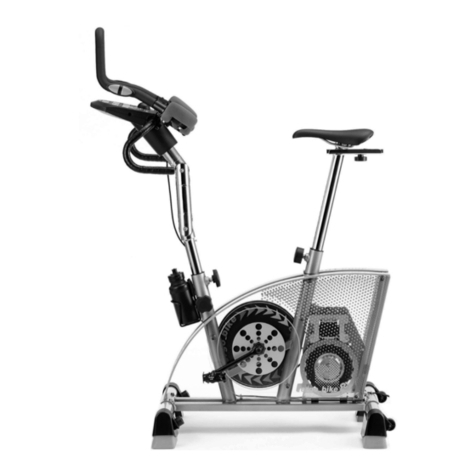
1
ergo bike
ergo_bike Model
Introduction
What is an ergometer bike?
This ergometer is specially designed for health and endurance training. High quality manuf-
acturing, easy to see dashboard, ease of use and maintenance all contribute to make this
appliance an ideal training device for sport and fitness purposes. Also note that the complete
equipment and the wide performance range should appeal to sport or fitness conscious
persons of every age group.
A full electronically controlled, maintenance free, eddy current break is at the heart of the
ergo_bike. It adjusts the load according to the values determined by the computer to fit the
strictly personal requirements, and allows a continuous load value selection from 25 to
400 Watt.
The ergometer is thus more than a “Home Trainer”, since it can
be used for both sports and therapeutic objectives.
ergo_bike cardio2002 pc
About this manual
You will find an explanation of the concepts
and expression that are new to you in the
Glossary in the appendix.
This load is then maintained independently of the speed expressed in revolutions per
minute (within the RPM ranges shown on the graph on page 9), which means it is possible
to train with a load that is considerably independent of the pedaling RPM. This feature
prevents an unwitting exposure to incorrect loads while training.
The cover of this manual contains a foldout page. This greatly simplifies the general
manipulations and the location of the display and control components on the folded out page.
An appropriate symbol is used to identify
various important information and remarks.
Please read them carefully.
The present instruction manual describes the
The ergo_bike was developped and manufactured in accordance with the standard
A DIN EN 957-1/5 (formerly DIN 32932/A), and is therefore suitable for therapeutic purposes.
The ability to prescribe the required power load in Watt beforehand is an essential
feature of an ergometer.






























